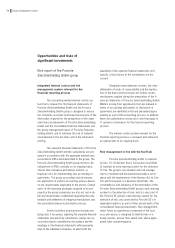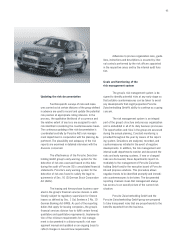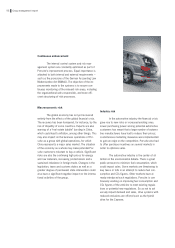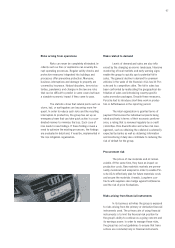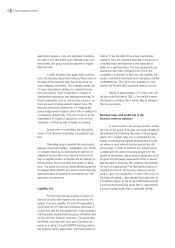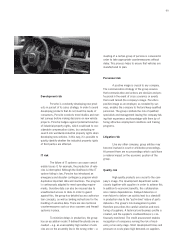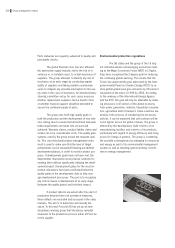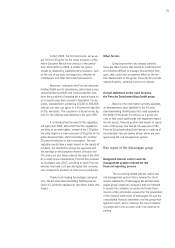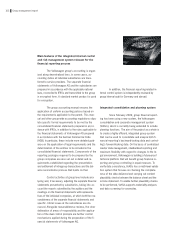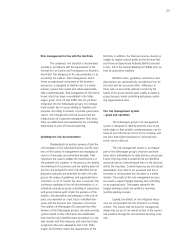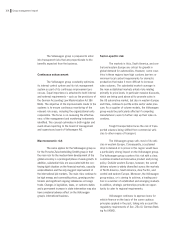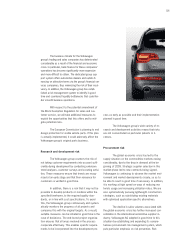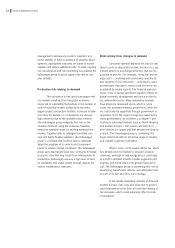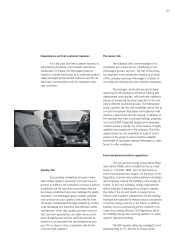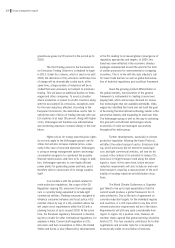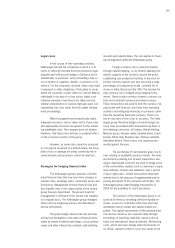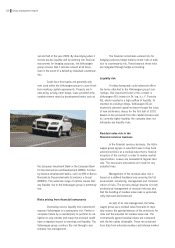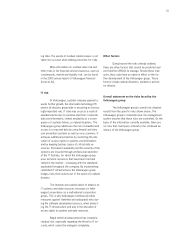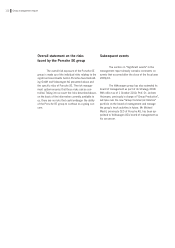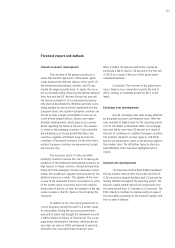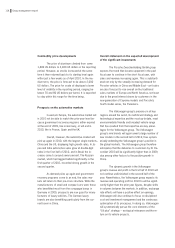Porsche 2009 Annual Report Download - page 104
Download and view the complete annual report
Please find page 104 of the 2009 Porsche annual report below. You can navigate through the pages in the report by either clicking on the pages listed below, or by using the keyword search tool below to find specific information within the annual report.
The Volkswagen group is prepared to enter
into transparent risks that are proportionate to the
benefits expected from the business.
Continuous enhancement
The Volkswagen group constantly optimizes
its internal control system and its risk management
system as part of its continuous improvement pro-
cesses. Equal importance is attached to both internal
and external requirements – such as the provisions of
the German Accounting Law Modernization Act (Bil-
MoG). The objective of the improvements made to the
systems is to ensure continuous monitoring of the
relevant risk areas, including the organizational units
responsible. The focus is on reviewing the effective-
ness of the management and monitoring instruments
identified. This concept culminates in both regular and
event-driven reporting to the board of management
and supervisory board of Volkswagen AG.
Macroeconomic risk
The same applies for the Volkswagen group as
for the Porsche Zwischenholding GmbH group in that
the main risk for the medium-term development of the
global economy is a prolonged phase of weak growth. In
addition, substantial risks are associated with the con-
tinuing tight situation on the financial markets, capacity
underutilization and the only sluggish improvement of
the international job markets. The main risks continue to
be high energy and commodity prices, growing protec-
tionism and significant ongoing imbalances in foreign
trade. Changes in legislation, taxes, or customs duties
and a permanent increase in state intervention may also
have a material adverse effect on the Volkswagen
group’s international business.
Sector-specific risk
The markets in Asia, South America, and cen-
tral and eastern Europe are critical for growth in
global demand for automobiles. However, some coun-
tries in these regions have high customs barriers or
minimum local content requirements for domestic
production that make it more difficult to increase
sales volumes. The substantial market coverage in
the main established markets entails risks relating
primarily to price levels. In particular massive discounts,
which are being used above all to promote sales in
the US automotive market, but also in western Europe
and China, continue to put the entire sector under pres-
sure. As a supplier of volume models, the Volkswagen
group would be particularly affected if competing
manufacturers were to further step up their sales in-
centives.
Freight transportation faces the risk of trans-
ported volumes being shifted from commercial vehi-
cles to other means of transport.
The Volkswagen group sells most of its vehi-
cles in western Europe. Consequently, a sustained
drop in demand or in prices in this region would have
a particularly strong impact on the Volkswagen group.
The Volkswagen group counters this risk with a clear,
customer-oriented and innovative product and pricing
policy. Outside western Europe, however, the overall
delivery volume is widely diversified across the markets
of North America, South America, Asia Pacific, and
central and eastern Europe. Moreover, the Volkswagen
group enjoys, or is aiming to achieve, a leading posi-
tion in a number of established and emerging markets.
In addition, strategic partnerships provide an oppor-
tunity to cater to regional requirements.
Volkswagen continues to approve loans for
vehicle finance on the basis of the same cautious
principles applied in the past, taking into account the
regulatory requirements of Sec. 25a (1) German Bank-
ing Act (KWG).
104 Group management report


